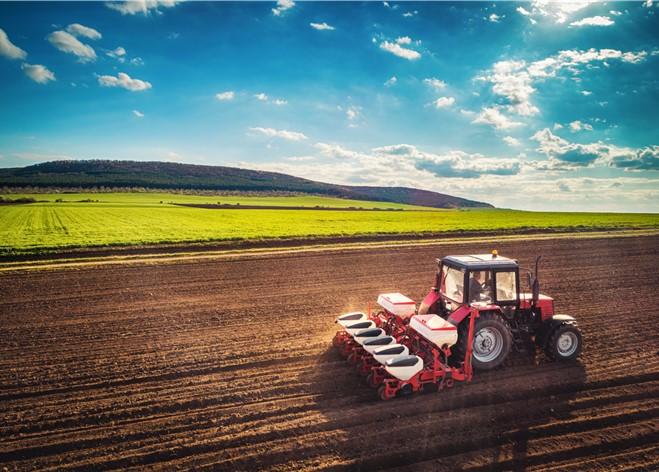
Photo: Adobe Stock
Staying Safe on the Farm
The U.S. Bureau of Labor Statistics (BLS) reports that farming, fishing, and forestry workers had the highest fatal work injury rate in 2022, at 23.5 per 100,000 full-time equivalent workers. The 2022 average rate for all workers was 3.7. During the business of spring, don’t forget to include safety measures on your farm. A little bit of time now could prevent an injury or save a life later.
Farm Worker Safety:
We’ve already enjoyed 90 degree weather this week; stay hydrated, wear sunscreen, and take breaks as needed. Wear personal protective equipment that’s appropriate for the job, including ear protection. Repeated exposure to noises from farm equipment can lead to hearing loss over time.
Teach Youth About Farm Safety:
Our youth are the next generation of farmers. Whether they are playing or working on the farm, teach them to be aware of the potentially dangerous places on the farm, such as manure pits and grain bins. Fully review how to operate equipment before putting them on it. Teach children how to handle animals and behave around them. Develop an emergency plan so that everyone knows what to do in case of an emergency. The National Children’s Center for Rural and Agricultural Health and Safety has many resources on farm safety.
Tractor Safety:
Make sure your tractors are equipped with a rollover protective structure (ROPS); this will provide a safe environment for the driver in the event of a rollover. If pulling a side-mounted implement, keep it on the uphill side of the tractor. Do not allow extra riders on the tractor; they could easily fall off and be seriously injured. When getting off a tractor, do not jump. Clothing could become caught on the tractor, and incorrect landings can result in injury. Keep power take-off (PTO) shields in place. Put a slow moving vehicle emblem, lights, and reflector tape on all equipment for maximum visibility, especially if they will be driven on the road. Perform routine maintenance to ensure all equipment is working properly, including cleaning the windshields for clear visibility. Use turn signals or hand signals to indicate which way you are turning.
ATV Safety:
While it is fun to drive all-terrain vehicles (ATVs) or other utility vehicles around the farm, they are not a toy. ATV incidents result from loss of control of the vehicle, rollovers, operators being thrown from the vehicle, colliding with a tree or other object, not protective equipment, and inexperienced operators. Slow down, drive carefully, and wear a helmet and sturdy shoes. Never carry a passenger; the extra weight will compromise the operator’s ability to steer and control the ATV. ATVs were not designed to be driven on hard surfaces; never ride them on public roads. Since ATVs are lower to the ground, use lights, reflectors, and flags to increase visibility around the farm.
Entering Confined Spaces:
If and when it is absolutely necessary to enter confined spaces, shut off all moving equipment such as augers and fans before entering. Use the lock-out/tag-out system by placing a tag at the “on” switch for all equipment; this lets others know that the equipment is not to be turned on while maintenance is being performed. Wear a harness attached to a secured rope, as well as the proper dust mask or respirator. Have at least one person outside the confined space to assist if necessary. The person outside should have visual or verbal contact at all times.
Grain Bins:
While standing outside the bin, use a long pole to break up crusted grain; this will reveal hidden pockets underneath the surface that could cause entrapment. When walking inside the bin, stay near the outer wall and keep walking if the grain should start to flow. Get to the ladder or safety rope as quickly as possible.
Silos: Run the blower for at least 30 to 45 minutes prior to entering the silo, and keep it running while in the silo; however, relying on the blower alone for ventilation is not enough. A self-contained breathing apparatus SCBA is strongly recommended, as there are no other breathing devices that can offer protection for the various silo gasses. Gas meters can be used to monitor gas levels.
Manure Storage:
Test the levels of oxygen and hazardous gasses before entering. Gas meters can detect the odorless, colorless gasses (such as carbon dioxide), and provide the specific concentration of the gas. Ventilate the storage area prior to and during the entry. A portable gas monitor and source of oxygen should be carried with you so that rapidly changing conditions can be monitored.
Safety When Agitating Manure Pits:
Gypsum has benefits as a bedding material, and is used as such on dairy farms. Under anaerobic conditions, like what can be found in manure pits (even under the crust of an open pit), gypsum can turn into hydrogen sulfide gas, which can be deadly to humans and animals. During agitation, the hydrogen sulfide can be released. Use gas monitors during agitation to monitor hydrogen sulfide levels. Keep children and pets away from the pit during agitation; hydrogen sulfide is heavier than air, and they will be the first to breathe it in. Not all farms that use gypsum have safety problems; however, this is something to be aware of.
This article appears in May 2024, Volume 15, Issue 2 of the Agronomy News.
Agronomy News, May 2024, Vol. 15, Issue 2
Agronomy News is a statewide newsletter for farmers, consultants, researchers, and educators interested in grain and row crop forage production systems. This newsletter is published once a month during the growing season and will include topics pertinent to agronomic crop production. Subscribers will receive an email with the latest edition.
Subscribe